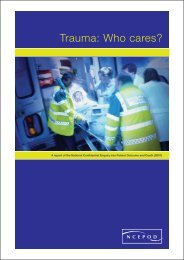A Transition Guide for All Services - Transition Information Network
A Transition Guide for All Services - Transition Information Network
A Transition Guide for All Services - Transition Information Network
- No tags were found...
You also want an ePaper? Increase the reach of your titles
YUMPU automatically turns print PDFs into web optimized ePapers that Google loves.
IntroductionMost disabled young people, like their non-disabled peers, will want to explorethe possibility of living with a greater degree of independence as they reachadulthood. For some disabled young people, this will lead to them movingaway from home and living independently. Others may require support to dothis. Some disabled young people with complex needs may remain at homebut look at other ways to become more independent. For those planning toleave home, the move can be both exciting and challenging.Choices in living independentlyFor many disabled young people moving from their family home will be partof the transition process. Beyond private rental and sale arrangements, thereare other options which may be available locally.Supported livingThis usually means support from an organisation to find and liveindependently – with support – in a home chosen by the disabled person. Inmost cases people enter into a tenancy agreement with the organisation orare supported to rent somewhere independently. Many schemes are <strong>for</strong>people with learning disabilities. Much of this support is provided throughvoluntary sector agencies who operate in local areas. The governments‘supporting people’ work underpins this.Shared housingOr housing based close together is also available in some areas. This is oftenbased on a small number of disabled people sharing a house or flat andhaving support staff visit a few times a week, or living in, depending onindividual need.Council housingMost council housing is allocated using a ‘points system’. Young disabledpeople may want to register with their local authority housing departmentand look at what the options are likely to be. For many disabled youngpeople, they are likely to access housing provided by local housingassociations via the council list as many associations specialise in providinghousing <strong>for</strong> specific groups. For example physically adapted property whichis fully accessible to wheelchair users.Chapter 3: Participation and further supportHousingHousing associationsAs stated above, many associations specialise is supporting particulargroups. They all have policies explaining their criteria which are availablefrom the associations directly. They will also explain their eligibility criteria.For example whether disabled young people can apply direct or only via thecouncil waiting list system.Shared ownershipShared ownership schemes are an increasingly common way to live. Theprinciple is that a share of the property is bought outright with a furthershare being owned by the scheme and the owner/tenant paying rent on this.65
















